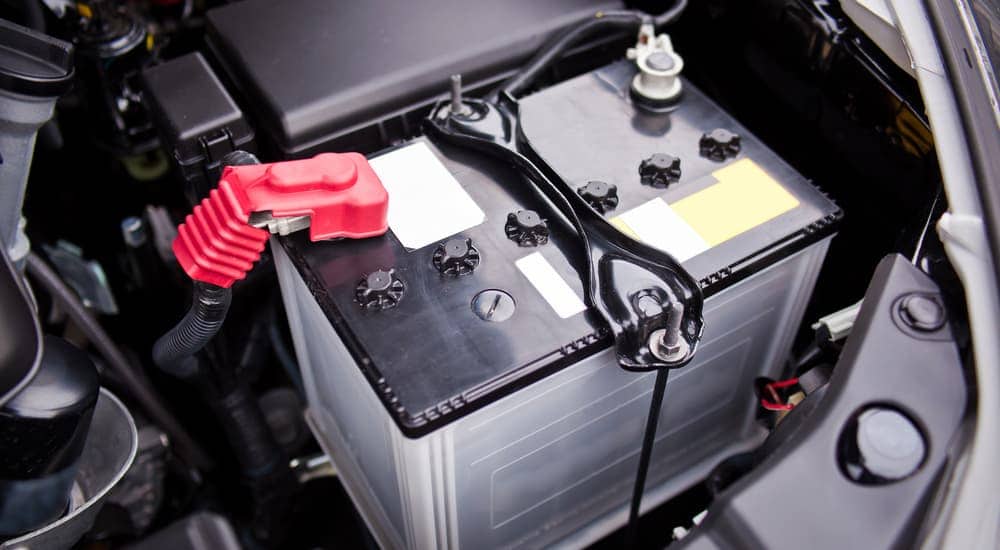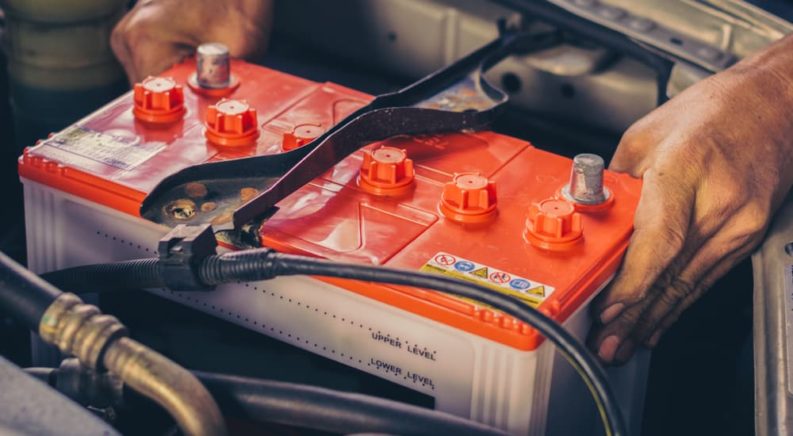Automobiles are amazing and intricate works of machinery that are enjoyed by a massive amount of people globally. No other form of transportation offers the amount of freedom that vehicles do, and there is an enormous amount of different options available. Whether it be a car, truck, SUV, van, or even a bus, there is a vehicle out there for just about any need imaginable. Although there is a massive amount of diverse vehicle types that exist, there are certain design aspects and components that are universal in all vehicles. This is mainly due to the necessity for operation. One of the essential components that are universally shared among all vehicles is car batteries.
As the name suggests, car batteries are batteries that are specifically designed for vehicles. Most need one, some require multiple, but just about every single vehicle needs a battery for it to operate. While many different electronic devices are in the common vehicle nowadays, the battery is not actually responsible for operating them while the vehicle’s engine is running. The battery is primarily used by the vehicle’s starter, which activates the motor. Once the engine is on and running, the vehicle’s alternator is what produces power for the vehicle. However, the battery can be used while the engine is off; you can operate individual components like the radio and lights. This can drain the battery of power, and if used for too long without turning the engine on, the battery can lose all power, which would require the battery to be recharged or replaced.
Vehicle batteries have come a long way since their inception over 100 years ago, becoming more powerful, efficient, and durable. Not a lot of people even think of their vehicle’s battery outside of when they need repairs. However, without a fully functioning battery, your vehicle would not be able to start, let alone drive.
How Car Batteries Work
To understand how car batteries operate, you first need to know how batteries work. Electricity itself is the flow of electrons through a conductive pathway, such as a wire. This pathway is called a circuit and is circular. Batteries have three primary components in them; the anode, which is negative (-), the cathode, which is positive (+), and the electrolyte. The anode and the cathode, which are the negative and positive ends of the battery, are hooked up to an electrical circuit. Causing a chemical reaction to occur inside of the battery, which creates a buildup of electrons in the anode. This creates an electrical imbalance in the battery. As more and more electrons build up, they begin to overflow.
Due to the nature of electrons, they repel each other and will seek out the area that has the fewest electrons in it. In a battery, the only place for the electrons to go is the cathode. However, due to the battery’s electrolyte, the electrons are unable to go directly to the battery’s cathode. The electrolyte will only allow the electrons to flow to the cathode if the battery is connected to a closed circuit. Meaning that there is an electrical wire connecting to both the cathode and the anode.

When the circuit is closed, the electrons are able to flow to the cathode and through to the electrical component that is connected, supplying it with electricity. However, over time, the electrochemical processes that occur in batteries change their very chemical composition, making them unable to produce electrons. This, in turn, renders the battery useless and is why batteries, in general, have a limited lifetime. When you recharge a battery, you are changing the direction of the flow of electrons in the battery using an outside power source. This causes the electrochemical process to happen reverse, which will eventually allow the battery to return to full power.
Car batteries operate very similarly to standard batteries, only on a much larger scale. They rely on a lead-acid reaction to occur and are considered SLI batteries, which stands for Starting, Lighting, and Ignition. These batteries excel in supplying quick and powerful spurts of energy, which is very useful when it comes to starting the engine, as well as the lights and accessories. Once the engine is running, the alternator takes over and supplies power for the vehicle. Most car batteries are 12-volt batteries, which have six cells that contain two plates each, totaling 12 plates. These plates are submerged in sulfuric acid, which causes a chemical reaction between the two plates, ultimately resulting in the production of electrons. These electrons then race around the plates and creates electricity. This electricity then flows from the battery into places like the engine, the lights, and the radio.
History of Batteries and the Evolution of the Car Battery
While batteries are a wonderful creation that can supply electricity to devices remotely, there is evidence that suggests batteries are far from a recent invention. Some scientists and archaeologists believe that ancient battery-like devices were used by the Parthians, who occupied and ruled the land that is now Baghdad in 200 BCE. While digging a new railway in Baghdad in the 1930s, workers began uncovering pots that seemed to be a form of battery. They were complete with a positive end, which was an iron rod, and a negative end, which was a copper cylinder. It is theorized that a sort of vinegar-based solution was poured into the bottom of the pot, which would create the necessary chemical reaction. However, there is not much consensus regarding whether or not they are batteries or their general usage at all. Although it should be noted that these sort of devices have been tested, and able to generate between 0.8-2.0V, lending credence to the theory.
Not much progress was made in terms of batteries for quite some time, and the first significant discoveries that led to mass-produced batteries occurred in 1800. A scientist by the name of Alessandro Volta identified that certain liquids are more conductive for electricity, and also that certain metals could produce electrons at faster rates than others. With this knowledge, William Cruikshank created the design for the first mass-produced battery in 1802. While it was effective, they were only single-use batteries due to the composition and would need to be replaced constantly.
Car batteries did not become a staple in most vehicles until Charles F. Kettering, with Henry M. Leland the founder of Cadillac, created the electric starter in 1912. By 1920, most new cars were being shipped with electric starters standard, making car batteries a necessity. These first batteries were 6V and were able to get the job done. These lasted until the 1950s, where a shift in vehicle design necessitated a change in batteries.
Due to the growing size of the vehicles themselves and engines, along with other electrical components, cars were being produced with 12V batteries, which are still used to this day in most vehicles. However, many innovations have been made since then as electrical demand grew in the 1990s and 2000s, with more cabin comforts and technology than ever before. This required another change, and Absorbed Glass Mat (AGM) batteries began being utilized, and mass-production began. These were being previously only used by military vehicles. These batteries are much more efficient than a standard lead-acid battery, and also allows a longer and larger peak electricity output.
We use batteries in our everyday lives without even realizing it or thinking about it. They have evolved into something we need everyday to make life easier. As fully electric vehicles are becoming more popular nowadays, it’s exciting to see not only how far car batteries have come, but the number of possibilities that lie ahead for them.

